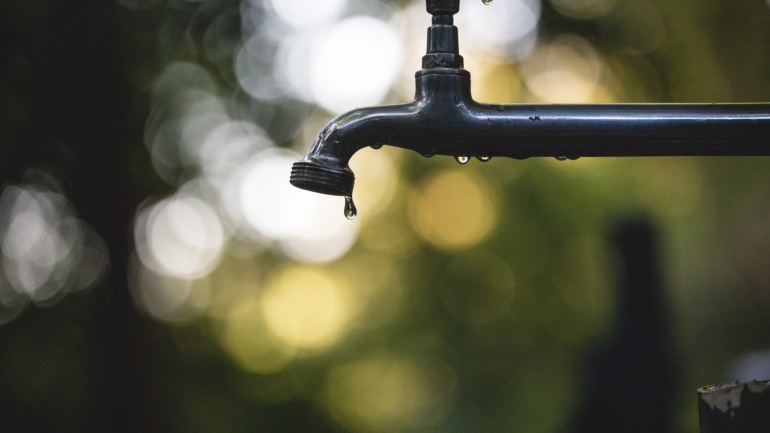By Erin Fee, Staff Writer & Researcher for Save The Water™ | September 17, 2018
This September, the U.S. House Energy and Commerce subcommittee and the Senate Subcommittee on Federal Spending Oversight and Emergency Management will hold hearings on per- and polyfluoroalkyl (PFAS) substances.1, 2 After the highly publicized contamination of drinking water in Michigan communities, the U.S. government has finally begun to move on this widespread hazard. Like the lead in Michigan, PFAS are contaminants, meaning a substance that can hurt the environment and humans. Here’s what you need to know about where these contaminants come from, why they are currently found in the bodies of most Americans, and how they pose various health risks.
What is a PFAS? It is a pervasive, mobile, and persistent chemical that is used in many consumer products.
PFAS, or per- and polyfluoroalkyl substances, have saturated our everyday lives since their invention in the 1950s. For example, consumer products advertised as non-stick, stain-resistant, or water-repellant probably contain PFAS.3 Also, we have them in some types of paints, waxes, cleaning products, packaging, and firefighting foams. In addition, facilities involved in electronics production, oil recovery, and chrome plating use PFAS.4
Don’t assume that PFAS is confined to those products and industries, however. In brief, Board Certified Environmental Engineering Member Rula A. Deeb put it simply: these chemicals are extraordinarily “mobile and persistent.”5 For example, firefighting foams and PFAS products do not simply dissolve into nothing after use. Instead, they linger and leach into the soil and water. On top of this, these substances never break down. Now, we have no way to efficiently remove them. For that reason, they have plenty of time to spread across incredible distances.
As a result, these chemicals have entered our bodies through what we eat, drink, and breathe. Most noteworthy, national studies have found PFAS-classified chemicals in over 99% of people sampled.6 Even newborns show traces of PFAS.7
What Does This Mean? PFAS has harmful health effects. Children are especially vulnerable.
Because of the above statistics, chances are high that PFAS is present to some extent in your body. But should we be concerned? Yes, we should be. To illustrate, Save the WaterTM staff writer Suraj Rajendran documented several health issues linked to PFAS exposure in adult and adolescent populations here. In summary, the presence of these chemicals correlates with high cholesterol, cancer, reproductive issues, inhibited immune system response, and obesity.8
Moreover, the latest scientific literature on PFAS paints an even more troubling picture. Above all, young children have been found to be especially vulnerable to these chemicals’ negative effects. Therefore, scientists hypothesize a reason for this that is twofold:9
- Children are more likely to be exposed to the chemicals through ingesting dust, breastfeeding, and contact with PFAS products. To illustrate, they chew on non-stick cookware or crawl on stain-resistant fabric.
- Children are at a critical developmental stage.
While information is still emerging, studies have found associations between PFAS exposure in children and several harmful health effects such as:
- Dyslipidemia
- Reduced vaccine effectiveness
- Less effective immune response
- Less effective renal function
- Delayed puberty
According to a 2017 review by Kristen Rappazzo, Evan Coffman, and Erin Hines, an analysis of 64 studies on children and PFAS concluded that scientists are learning that childhood exposure during developmental periods may negatively impact a person’s lifelong health. So they concluded that this is true “even at doses that have little effect in adults.”9
PFAS Today: Government Action
As scientific data repeatedly verifies that PFAS exposure is a reality to be taken seriously, concerned citizens have called for increasing governmental regulations and investigations. Now, meaning as of September 2018, incidents have catapulted PFAS from relative obscurity and into the national spotlight.
Last month, in August of 2018, Congress enacted a law directing the U.S. Department of Defense to report on PFAS use on military bases and surrounding communities.10 In addition, the new law requires the Department of Defense to assess the human health effects of PFAS exposure.10 Now, three other bills are moving through the U.S. Senate and one bill is moving through the U.S. House of Representatives to regulate PFAS.11
In addition, subcommittees of the U.S. House and U.S. Senate will hold hearings this month on PFAS as a response to events in Michigan. In that state, the local government issued warnings to two communities in Kalamazoo County to stop drinking or cooking with water because of contamination. Moreover, Michigan representatives have also co-sponsored a House bill that would require the Environmental Protection Agency to set containment goals and establish PFAS-contaminated drinking water standards. Meanwhile, Senator Debbie Stabenow has introduced bills for mandatory contamination reporting, enforced cleanup deadlines, and the dedication of funds toward developing PFAS detection technology.1
PFAS Today: What You Can Do
Lastly, issues such as PFAS contamination can frustrate and frighten the average citizen because the future largely depends on governmental or corporate actions rather than individual action. But as the outcry from Michigan has demonstrated, local experiences can direct the flow of policy. Above all, here are three things you can do now:
- Please consider donating to Save the WaterTM as we follow these stories.
- Contact your local government to ask what they are doing about PFAS in your water.
- Contact your members of Congress to let them know that this an issue important to you.
References
- Melissa Burke. August 31, 2018. “U.S. House panel set to hold hearing on PFAS contamination.” The Detroit News. https://detne.ws/2Cdn0rL
- Leonard N. Fleming. August 23, 2018. “Peters plans hearing on PFAS contamination.” The Detroit News. https://detne.ws/2MNFinx
- Agency for Toxic Substances and Disease Registry. January 10, 2018. “Per- and Polyfluoroalkyl Substances (PFAS) and Your Health.” ATSDR. https://www.atsdr.cdc.gov/pfas/overview.html
- United States Environmental Protection Agency. “Basic Information on PFAS.” EPA. https://www.epa.gov/pfas/basic-information-pfas
- Rula Deeb. May 17, 2018. “Overview of PFAS Technical and Regulatory Issues.” https://bit.ly/2O7rYb2
- Kristen Rappazzo, Evan Coffman, & Erin P. Hines. July 2017. “Exposure to Perfluorinated Alkyl Substances and Health Outcomes in Children: A Systematic Review of the Epidemiologic Literature.” International Journal of Environmental Research and Public Health, 14(7). https://www.ncbi.nlm.nih.gov/pmc/articles/PMC5551129/
- PR Newswire. August 8, 2018. “Green Science Policy: Decades-long cover up led to current widespread drinking water contamination.” PR Newswire. https://prn.to/2NOrJl8
- Suraj Rajendran. October 27, 2016. “PFAs: Toxins for 6 Million People.” Save the Water.™ https://savethewater.org/2016/11/07/toxin-6-million-people/
- Kerstin Winkens, Robin Vestergren, Urs Berger & Ian T. Cousins. June 2017. “Early life exposure to per- and polyfluoroalkyl substances (PFASs): A critical review.” Emerging Contaminants, 3(2), 55-68. https://www.sciencedirect.com/science/article/pii/S2405665017300033
- “National Defense Authorization Act for Fiscal Year 2019.” August 13, 2018. Pub.L. No. 115-232. Congress.gov.
- Congress.gov.>/li>





